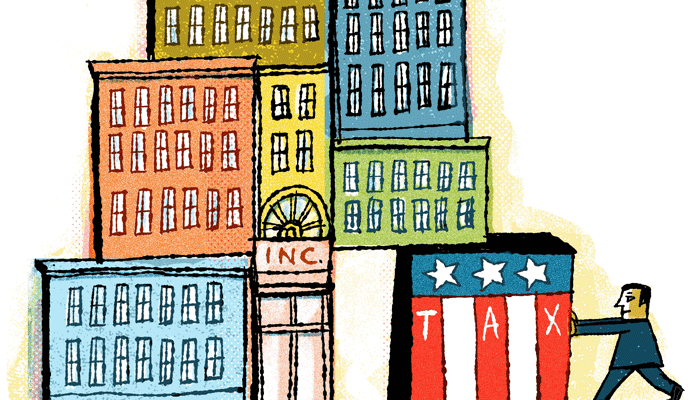The Fiscal Fingerprints of Corporate Collusion
Firms that engage in bad deeds leave all sorts of clues tied to accounting and governance.
Title: Smokescreen: How Managers Behave When They Have Something to Hide (free)
Authors: Tanja Artiga González (University of St. Gallen), Markus Schmid (University of St. Gallen), and David Yermack (New York University)
Publisher: NYU Working Paper No. FIN-13-002
Date Published: April 2013
How do firms that are breaking the rules try to cover up their tracks? According to a recent study, companies that are systematically involved in price fixing employ a variety of accounting and governance practices designed to throw off regulators and avoid liability. For top executives and directors at these firms who are not part of the scheme, knowing which machinations to look for could prove vital in heading off costly corporate missteps. Shareholders and analysts could benefit as well.
The authors analyzed more than 200 U.S.-based firms listed in the Private International Cartel database, which includes all cartels discovered, disclosed, and broken up by regulators from 1986 through 2010. A cartel is defined as a group of independent companies that attempt to increase their joint profits via explicit illegal agreements, such as pacts that control prices and restrict supply, usually at the direction of middle or top managers.
The database shows a rise in the number of cases in recent years, and the authors note that a 2007 study estimated that only 10 to 30 percent of cartels are uncovered. But when companies are caught, the same study found, they face stiff financial penalties, from civil litigation and the government.
Combining several sources of data—including those covering firms’ audit activity, director characteristics, financial restatements, and stock returns—the authors studied the cartel-related behavior of 216 companies, 67 of which participated in more than one price-fixing scheme. The average cartel lasted for six years before regulators stepped in, and the longest stretched out 22 years. One oil company was embroiled in 13 schemes, the most of any firm in the study.
The authors constructed a control sample of similar companies matched to each cartel firm, based on their size, SIC industry code, and other factors. In all, more than 3,500 control companies were matched to the 216 offending firms. In each stage of analysis, the authors controlled for such variables as profitability, board structure and independence, and industry trends.
On a basic level, the authors’ analysis showed, cartel firms thrived from their conspiracies: During the period of collusion, their sales grew 4.6 percent faster and their market capitalization rose 3.6 percent faster than at control firms. This payoff stood out when compared to the two-year period before the conspiracy began as well as the two-year period after it ended, when the “benefits” from the price fixing were no longer in effect. During both of those periods, the cartel and control companies grew at essentially the same rate.
But rather than passing on the profits to stockholders, colluding firms tended to plow the extra earnings back into hiring more employees and systematically expanding their property, facilities, and equipment. Because many cartel firms agree not to infringe on one another’s market share while conspiring, these forms of expansion could be diversionary in nature, the authors argue, to imply growth even though the terrain of some or all of their competitors is off limits.
Among the study’s other findings: Directors resigned or retired far more frequently at cartel firms than at their control counterparts, and when they left, the board usually shrank instead of filling their seat. “One clear possibility is that board members who become aware of wrongdoing leave quietly to evade future legal liability or to signal disagreement with management’s actions,” the authors write. And by leaving the seat vacant, the company avoids the risk of bringing a potentially effective monitor on board.
Cartel firms also tend to have a larger proportion of directors who serve on three or more boards at once, and of foreign board members who are often based abroad. Members of the latter group have been shown in recent studies to perform their oversight duties less efficiently on average because of their physical distance from the company’s base and their unfamiliarity with U.S. accounting laws. When they do appoint new directors, colluding firms are more likely to tap busy outsiders, consistent with the idea that management wants board members who won’t monitor the company too closely.
Auditor changes occurred with far less frequency at price-rigging firms than at companies in the control group, the authors found, with annual rates of 3.3 percent versus 6.2 percent, respectively. In addition, cartel firms tended to smooth out their earnings reports, to avoid the appearance of huge income swings. They had a 50 percent higher rate of restating financial disclosures than did the control companies, which is, the authors write, “consistent with a strategy of using misleading accounting in order to conceal the firm’s true operating performance.”
Managers at colluding companies also exercised their stock options more rapidly, a sign that these executives, in large numbers, harbored concerns about whether the cartel could be sustained, and wanted to cash out before regulators pulled the plug and stock prices plunged. However, some very early cash-outs may be intended to confuse outsiders by making it seem as if the managers didn’t anticipate the sharp rises in stock prices that initially flowed from the collusion.
The authors see similar patterns in other scenarios in which firms hide information from their own monitors or from outsiders. Indeed, they say, “we expect that [our results] should apply generally to all companies in which the managers seek to conceal poor performance or personal wrongdoing.” For example, companies may not want to lay bare their capital investments or expenditures on new product development, and could seek to obfuscate their spending levels by reclassifying the accounting reports of different business units or smoothing earnings from one time period to the next. When shareholders, analysts, and board members understand the playbook of strategies used by deceptive managers, they are more apt to uncover problems such as embezzlement or the misleading of creditors.
Bottom Line:
Firms that engage in price fixing employ a range of strategies designed to hide their activities from internal and external monitors. They are less likely than non-colluding firms to replace departing board members and typically turn to busy or foreign outsiders when they do. They smooth out their earnings numbers, issue more restatements of financial reports, and are reluctant to switch auditors.




